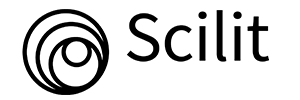
Journal Basic Info
**Impact Factor calculated based on Google Scholar Citations. Please contact us for any more details.Major Scope
- Prostate Cancer
- Carcinomas
- Bladder Cancer
- Radiation Therapy
- Chemoprevention
- Urological Cancers
- Hematology
- Haemato-Oncology
Abstract
Citation: Clin Oncol. 2022;7(1):1898.DOI: 10.25107/2474-1663.1898
Pregnancy Associated Breast Cancer Prognosis and Outcome, Qatar Experience
Hind Habish, Salha Bu Jassoum, Kulsoom Junejo, Mariam Al-Belushi, Hekmet Bugrein and Hafedh Ghazouani
Hamad Medical Corporation Building, Qatar
*Correspondance to: Hind Habish
PDF Full Text Research Article | Open Access
Abstract:
Background: During pregnancy, breast cancer is the most diagnosed cancer. Personal and social factors tailored to the patient should be taken into account when deciding about the best treatment plan, hence, the application of precision medicine in this era is required. The impact of many risk factors on Pregnancy Associated Breast Cancer (PABC) prognosis is incompletely understood. Our study aims to assess the prevalence of PABC in Qatar and to study the association between the individual risk factors and the disease, pregnancy, fetal and maternal outcome.
Methods: This is a retrospective data review for all women seen at breast surgery, Oncology and women’s hospital in Hamad Medical Corporation, Qatar, who were diagnosed with Breast cancer during pregnancy and post-partum period up to one year after delivery during the period in 01/01/2011 to 31/12/2019.
Results: The prevalence of PABC was about 32 in 1,000 among women diagnosed with breast cancer. Most patients were young at diagnosis. The mean age of menarche was 13 years. Family history of breast/ovarian cancer and parity of ≥ 3 had the higher association to PABC (21%, 57% respectively). The most common histological type of PABC was Invasive ductal carcinoma (92%) with large size tumors of >2 cm (n=43). Lymph node involvement was apparent in 75% of the cases. Most tumors were hormone receptor positive (68%) and HER2 negative (68%). 30% of the tumors were luminal B subtype. BRCA1 mutation was more evident in PABC patients than BRCA2 (17% compared to 0%). Most pregnant ladies had full term delivery (45%) of healthy babies (74%) with average weight of 3 kg. Only 11% of the patients had termination of pregnancy. The median overall survival was 88 months. None of the risk factors were correlated to pregnancy outcome. Factors associated with good fetal outcome were; diagnosis at ≥ 12 weeks gestational age and parity ≥ 3. Factors correlated to poor survival were; parity ≥ 3, lymph node involvement, presence of LVI and high ki67 ≥ 20%.
Conclusion: These findings confirm the importance of incorporating the patient & tumor characteristics and related risk factors in designing individualized management plan for patients with PABC.
Keywords:
Pregnancy associated breast cancer; Risk factors; Clinical outcome
Cite the Article:
Habish H, Jassoum SB, Junejo K, Al-Belushi M, Bugrein H, Ghazouani H. Pregnancy Associated Breast Cancer Prognosis and Outcome, Qatar Experience. Clin Oncol. 2022;7:1898..













